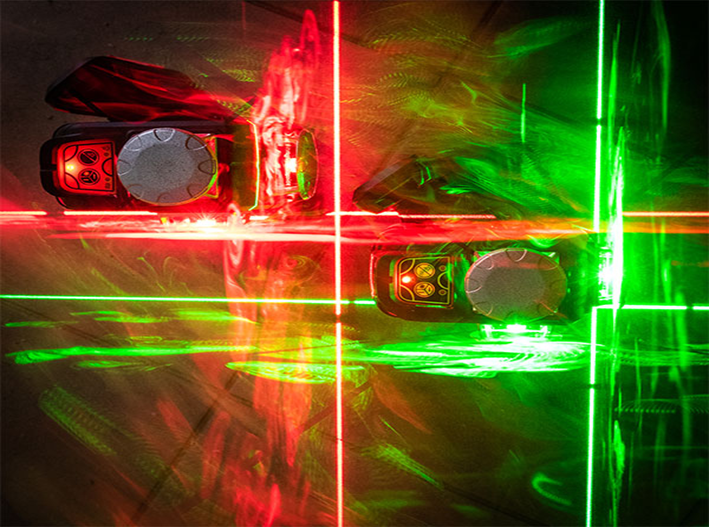Red and Green Lasers – What’s the Difference and Which is Best?

Have you ever wondered what the difference is between red and green lasers? This article will help you understand and clarify the difference between red and green lasers, as well as how they work. It will also give you an introduction to their uses and specifications for your further reading.
Deciphering between Red and Green
Red and Green lasers are two of the most common types of laser pointers used in construction projects. The difference between the two is that red lasers operate at a wavelength of 632 nm and green lasers operate at 532 nm.
Red lasers are typically used for pointing out areas that need to be cut or drilled, while green lasers are used for aligning objects. Red lasers are more visible in bright daylight conditions, while green lasers can be seen better in low light conditions.
When choosing between red and green laser pointers, it’s important to consider what you’ll be using them for as well as what type of environment you’ll be working in.
Which color laser is the best?
Red and green lasers are often used for construction purposes, but which is best for your needs?
Red lasers are more powerful than green lasers and can be used to cut through materials like metal, wood, glass, and plastic. They can also be used to burn holes in objects. However, red lasers tend to be less visible in daylight and may not work as well in low light conditions.
Green lasers are less powerful than red lasers but they are easier to see in daylight or at night. Green lasers work better on most surfaces including fabric and non-metallic materials (like paper).
Red versus green for green dot sights
When it comes to green dot sights in construction, red and green lasers are both popular options. But what’s the difference between them? Which one is best for your situation?
Red lasers are more visible in bright sunlight than green lasers, which tends to make them better for use during the day. They also have a longer range than green lasers. On the other hand, a green laser will be more visible at night and through fog or rain. It also has a slightly shorter range than a red laser.
One thing that should be noted about these types of lasers is that they can’t be used together on the same sight because they’re tuned differently (red is tuned for daytime use and green for nighttime use). In fact, if you try to use them together, you’ll get an error message telling you that they aren’t compatible! So make sure you know what kind of sighting system you want before making any purchases!
What about blue lasers?
Blue lasers are another option for construction, but they aren’t as common. Red and green lasers are the most popular in construction because they can be seen in low light conditions and on a wide variety of surfaces. Blue lasers work best when there’s plenty of ambient light around them. You might see them used in warehouses or other spaces where there’s lots of natural light coming through windows or skylights.
Although red is more affordable, green lasers are easier to see.
Both have their place in construction, and it will depend on a few factors. If your work requires that you think about red and green a lot, you may be more interested in a red laser. However, if you’d rather stick to other colors like blue or yellow, then consider the green laser. Whichever type of construction laser you choose, if your work involves measurements, there’s no better tool than a laser level to ensure accuracy.











